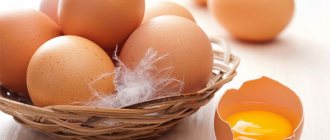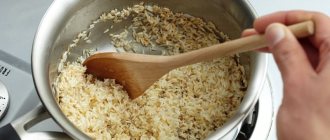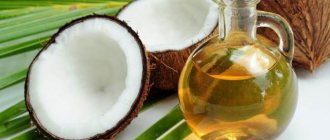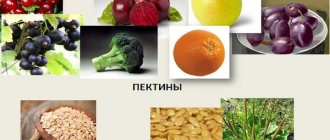Pork for children
The magazine "Polzateevo" recommends giving pork to children starting from 8 months without fail. It is very useful for a growing, developing young organism.
Advice! You need to start introducing pork meat with half a teaspoon and gradually increase the portion if everything goes well. For children, it is worth taking lean pork, absolutely without fat and completely home-fed.
It is recommended to completely grind the pork and mix it with potato or vegetable puree. This meat is second only to lamb in terms of ease of digestion. It is useful for children because, thanks to its rich composition, it helps to develop the body. It participates in the formation of all the bones of the body, making them stronger, more resilient and durable. It has a good effect on the gastric tract, fills the body with vitamins, minerals, helps the heart do its job and has a positive effect on blood composition. It also stimulates growth hormone, and the baby grows in accordance with the norms.
Children really love cutlets, meatballs, and pork chops. All this should preferably be steamed, with minimal use of seasonings and sunflower oil. Can be baked in the oven and stewed in a pot.
Features of eating meat
When following a diet, you cannot stop eating protein foods, especially meat. Hemoglobin may drop, heart problems will appear, bones will become less dense, but the meat must also be prepared and chosen correctly.
Lean veal does not harm your figure. You can prepare dishes from roast beef, sirloin and steak. It is better to avoid ribs and fatty entrecote, which contain layers of fat.
The best veal is cooked on the grill or in the oven.
It is better not to serve hearty horse meat in the evening. Its useful components will come in handy for lunch. When it comes to chicken, it is better to give preference to brisket, and it is better to forget about fried legs and wings. These are the fattest parts of chicken. The chicken breast is baked in foil, grilled without oil, and stewed with vegetables.
Boiled meat is served without fatty broths and sauces with vegetables:
- all varieties of cabbage; Read more about the diet on different types of cabbage in the article
- green beans;
- zucchini;
- celery;
- green peas;
- carrots;
- paprika;
- tomatoes.
They are served stewed, mashed or raw. It is advisable to exclude salt from the menu. The meat is seasoned with different spices for taste. It is better not to mix meat with potatoes, pasta, rice or cereals. These are dishes that are hard on the stomach.
The benefits of pork for men and women
Many experts note the great benefits of pork meat for men and their health. It is believed that it has a beneficial effect on male strength, restores it, and supports it in old age. Helps cope with impotence. In addition, pork is rich in proteins, which is important for muscle recovery.
It is recommended to consume pork for those men who engage in physical labor, sports, and want to increase muscle mass. Young dietary pork is very useful for men after a heart attack. It promotes faster recovery and helps you gain strength and recover faster.
For women, the benefits of pork are also very great. In addition to all the above beneficial properties, it is very useful for pregnant women. All its vitamins have a positive effect on the fetus and during pregnancy. All spent body reserves are quickly and well restored thanks to pork.
How to cook meat for those who want to lose weight?
Finding a product, the use of which will not affect our figure and will help maintain health and vigor, is not enough - we need to learn how to prepare it correctly. It’s easy to harm yourself by choosing the wrong option: for example, just fry chicken or rabbit meat in vegetable oil or butter to increase the calorie content of the dish and allow yourself to eat too much.
We recommend using cooking methods that do not involve the use of additional fats. Please pay attention to:
- cooking;
- steaming meat (for example, steamed chicken cutlets);
- stewing;
- baking (in a special plastic bag or foil).
You can also use a slow cooker - it helps preserve the beneficial properties of the product, minimally affecting the calorie content of the cooked food.
Do not forget about the basic rules for preparing meat for boiling, stewing, and baking: the skin, veins, films and bones should be removed. If you want to use seasonings, take only natural herbs and spices - add the latter to a minimum. Coriander, garlic, saffron, and basil are perfect. Leave the ready-made mixtures sold in stores there - they contain dyes, flavors and flavor enhancers.
The question that worries most housewives is: what can you marinate dietary meat in? We offer you the following easy options for the marinade base:
- kefir;
- vinegar (apple or regular);
- lemon, lime, kiwi, pineapple juice.
You can season the finished dish with a mix of olive oil, the zest of one citrus fruit, its juice, a pinch of salt and pepper. This is the so-called “dressing” - a universal dietary low-calorie sauce that is excellent not only for meat, but also for fish. Such seasonings are prepared based on vegetable oil (liquid version). The main ingredients of thick versions are bio-yogurt or buttermilk (low-fat cream).
So, the basic rules for cooking chicken, rabbit and turkey are as follows:
We get rid of the skin, films, and bones first.
It is better to boil meat, bake it or stew it, rather than fry it.
When cooking, do not use oil, mayonnaise and hot sauces - they increase the calorie content of the finished dish.
If you think that meat without the usual dressings will be too dry, stew it in combination with a mix of tomatoes, sweet peppers, lemon juice and plain water - the result of your efforts will be the discovery of a new taste.
The ideal side dish for the prepared dish would be fresh vegetable salads with the addition of arugula, chicory, spinach, batavia, chard, baked or steamed vegetables.
If you want your dishes to be not only tasty, but also healthy, and your nutrition to be healthy, include chicken, veal, rabbit or turkey in your diet. Don’t forget about how best to prepare such products: not by frying them until golden brown in oil, but by baking or steaming them - this way you will preserve their advantages without turning them into disadvantages.
Look at our Clients' Acknowledgments and Success Stories – View
Our experts will tell you which meat is the fattest, and which you should under no circumstances refuse. We will create an optimal diet for you that will meet your daily needs for proteins, fats and carbohydrates and will allow you to lose weight without cheating on yourself or giving up tasty and healthy food. Find the key to slimness and health with us!
If a person is not a vegetarian, then dishes made from dietary meat without fat, prepared according to specially developed recipes, must be included in his diet, because thanks to this useful product the body is enriched with vitamins and essential microelements. However, not all meat can be considered healthy, because each type differs in taste and composition.
Cooking recipes
Pork is present in almost all cuisines of the world. This juicy, soft and tasty meat can be prepared in many ways. The number and variety of recipes is simply impressive. Pork can be prepared sweet and salty, fragrant and spicy. It all depends on your taste and preferences.
The simplest and best recipe for cooking pork:
Salt and pepper the pork. Add any spices and seasonings to your taste, it could be cloves, bay leaves, garlic, coriander and others. Bake in a baking tray in the oven. You can bake potatoes, vegetables, mushrooms, and pasta with pork.
Top 10 Lowest Calorie Recipes
Grilled (223 calories/100 g)
A very appetizing dish that is suitable for a festive table. Due to the absence of oil in the recipe and the choice of low-fat meat options, it is allowed during the diet. Necessary products for cooking:
- pork – 800 grams;
- tomatoes – 4 pcs.;
- bell pepper – 2 pcs.;
- table salt – 1 tsp;
- hot chili pepper – 1 pc.
First, rinse the meat and cut it across the fibrous structure, the thickness of the strips is approximately 1.5 cm. Scald the tomatoes with water and remove the skin, peel the bell pepper. Next, grind the prepared vegetables using a kitchen blender. Pour the mixture over the meat and leave to marinate for 1 hour. Next, grill it for about 40-50 minutes, depending on the size of the pieces.
Try to choose sirloin, tenderloin, shoulder or pork liver - these are the meat parts that will contain less fat. At the same time, you should not buy shanks and lard with layers.
Meat borscht (41 kcal/100 g)
A hearty first course with pieces of meat. For preparation you will need the following ingredients:
- pork – 0.5 kg;
- beets – 2 pcs.;
- carrots – 1 pc.;
- onion – 1 pc.;
- cabbage – 1 pc.;
- bay leaf – 2-3 pcs.;
- lemon juice – 1 tbsp. l.;
- sugar – 1 tbsp. l.;
- salt, fresh herbs - add to taste;
- water – 3 liters.
Rinse the meat thoroughly and cut into large pieces, then boil for about 40 minutes. Grate the peeled and washed carrots, beets, and chop the onion into cubes. Add vegetables to the pot with meat. Also add lemon juice, sugar and salt to the water and cook the dish for another 40 minutes.
Meanwhile, chop the cabbage and add to the pan along with the bay leaf. Cook the borscht for another 20 minutes. This dish should be served with herbs, low-fat sour cream and whole grain bread based on rye flour.
In a slow cooker (239 kcal/100 g)
This recipe requires a minimum of effort and products. The result is a satisfying dish with a reduced amount of calories. Required list of ingredients:
- pork – 450 grams;
- onions – 2 pcs.;
- garlic – 2 cloves;
- salt, spices - add to taste.
First, prepare the meat - rinse it under running water and dry it, trim off excess fat and veins as necessary. Cut into strips no more than 2 cm thick (in this case, the pork will cook quickly and remain juicy).
Next, rub the meat with a little salt and your chosen spices. Peel and chop the onion and remove the skins from the garlic. Make small cuts in the meat and place a garlic clove and chopped onion in them. Cook the meat in a slow cooker using the “Stew” mode for 50 minutes. The pork dish should be served with a vegetable side dish and herbs.
Pilaf (127 kcal)
Spicy pilaf with brown rice is suitable for a hearty lunch or dinner on a diet. To prepare it you need:
- pork – 1 kg;
- unpolished rice – 800 grams;
- carrots – 4 pcs.;
- onions – 4 pcs.;
- garlic – 1 clove;
- purified water – 1 l;
- sea salt, spices - add to the dish to taste.
Peel and cut the onion into cubes, grate the carrots - add both ingredients to the pan. Cut the meat into small slices and place in a container with vegetables, salt to taste. Sprinkle rice on top and pour hot water over everything.
Cover the pan with a lid and simmer for about 30 minutes over low heat. Then add the peeled garlic and let simmer for another 10 minutes. Then mix thoroughly and let the pilaf brew. Serve with a light vegetable salad as a side.
Shish kebab (184 kcal)
An ideal recipe for an outdoor picnic or holiday menu. For cooking you need:
- pork – 1 kg;
- onions – 3 pcs.;
- lemon – 2 pcs.;
- salt, dried paprika - to taste.
Rinse the pork and cut into medium pieces, place in a container. Then salt the meat and add paprika. Peel the onion and chop thoroughly, squeeze lemon juice into it. Add this marinade to the meat and let it brew for 2 hours. Next, the kebab can be strung on skewers or cooked using a grill. Cooking time is approximately 40-50 minutes. Serve with lettuce leaves and herbs to taste.
Cutlets (211 kcal/100 grams)
You can make juicy and tasty cutlets using pork meat (loin is best). To reduce calorie content, this dish is steamed. Required ingredients:
- pork – 400 grams;
- bread – 50 grams;
- water – 50 ml;
- egg – 1 pc.;
- onion – 1 pc.;
- garlic – 2 cloves;
- sea salt, allspice - add to taste.
Rinse the meat and then pass through a meat grinder. Soak the bread in water, then grind it in a blender and add it to the meat. Peel the onion and garlic, chop finely and add to the minced meat. Then break the egg into the minced meat, add spices and salt, mix everything thoroughly. Prepare a steamer and place small cutlets of cooked minced meat on a tray. Cooking time is approximately 30 minutes. Serve these cutlets with a low-calorie vegetable stew.
With vegetables (216 kcal/100 g)
A balanced protein dish with tender meat and vegetables. Ingredients needed to prepare the dish:
- pork – 300 grams;
- mixture of frozen vegetables – 600 grams;
- garlic – 3 cloves;
- spices, salt - add to taste.
Rinse the pork and cut into pieces, cover it with spices and add a little salt. Mix the meat with the vegetable mixture and place in the multicooker bowl. Turn on the “Stew” mode and cook the dish for 40 minutes. 5 minutes before cooking, add chopped garlic.
In soy sauce (246 kcal/100 grams)
Soy sauce perfectly complements the taste of pork and makes the dish more harmonious. Required list of products:
- pork – 1 kg;
- natural soy sauce – 20 ml;
- garlic – 6 cloves;
- ground allspice, salt - add to taste;
- bay leaf – 4 pcs.
Process the meat and cut it into portions. Then prepare a spicy marinade - combine soy sauce, spices and salt. Pour it over the meat and let it sit for at least 12 hours (this will ensure softness and a delicate taste).
Peel the garlic and carefully chop it - stuff the cut cloves into the cuts in the meat. Next, cover the baking sheet with foil and place the meat, cover with another layer of foil on top. Cook the dish for about 90 minutes in a preheated oven. This pork should be served with fresh vegetables or herbs to taste.
With Apple Cider Vinegar (220 calories/100 grams)
A savory pork recipe that you can prepare on a diet. Required list of products:
- pork – 1.5 kg;
- onions – 2 pcs.;
- apple cider vinegar – 3 tbsp. l.;
- fresh basil – 1 bunch;
- sugar – 1 tbsp. l.;
- mineral water – 200 ml;
- table salt, ground pepper - add to taste.
Gently rinse the pork tenderloin with water and pat dry. Rinse fresh basil under the tap and chop finely. Peel the onion and cut into 4 equal parts. Grind the onions and herbs using a food processor. Add sugar, pepper, salt and apple cider vinegar to the mixture and mix well.
Pour mineral water over the marinade base and place the meat in it. Let it marinate for about 10 hours. After this, place the meat on a tray and cook in the microwave for 80 minutes. Serve with any low-calorie side dish of your choice.
In the oven with orange juice (212 calories/100 grams)
An original pork recipe with citrus notes that will diversify a meager diet menu. For juiciness and rich taste, the dish is cooked in the sleeve. Required list of ingredients:
- pork – 2 kg;
- bay leaf – 2 pcs.;
- rosemary – 1 sprig;
- garlic – 3-4 cloves;
- orange juice – 100 ml;
- salt, white pepper - add to taste.
Rinse the pork well and soak in a salt solution for 60 minutes. Crush the rosemary and bay leaf in a special mortar. Peel the garlic and pass through a hand press. Rub the pork with spices and garlic mixture.
Place the meat in a special sleeve and tie one edge with wire. Then carefully pour the orange juice inside and tie the opposite edge of the sleeve tightly. Mix the meat and juices with shaking movements to evenly distribute the ingredients. Place the pork in the sleeve on a baking sheet and place it in the oven. Cooking time is approximately 90 minutes. When serving, the pork can be garnished with fresh citrus slices and complemented with a light vegetable salad.
The benefits and harms of pork - we study the composition of the product
It will seem a little strange if you call pig meat dietary. However, this statement is not far from the truth. Pork helps reduce “bad” cholesterol in the blood. It is a “supplier” of natural protein, a “regulator” of iron levels in the body. In addition, pork has a positive effect on the functioning of the nervous system.
Pig meat is rich in B vitamins. In addition, it contains vitamin PP, as well as macro and microelements necessary for humans: zinc, potassium, iron, copper, sodium, magnesium, sulfur.
Pork, as mentioned, is a “record holder” for protein content: in 100 g of product there is about 20 g of a substance that can safely be called a “building material” for cells.
Pork does not have as much fat as is commonly believed - 7.1 g per 100 g. If you separate the lard and eat exclusively meat, then such food can be equated to dietary nutrition.
Fattier meat
The fattest parts of a pig carcass are the ham, neck, ribs, and brisket. Of course, we must not forget about lard. This product comes in the form of layers and may have small layers of meat.
You can also highlight the bacon. This is solid subcutaneous fat, without stratification. There is evidence that lard is less harmful to the heart than beef lard. In addition, selenium and arachidonic acid protect the body from the formation of cancer cells and from aging.
All fatty parts are fried (including over an open fire), stewed, baked and generally used for a large number of dishes. These products can be called universal with distinct pork flavors.
The fatty part of pork, especially when fried, has a high calorie content. There are 491 kcal per 100 g. Of these, fat is 49.3 g, and protein is 11.7 g. The boiled version has a lower figure, but not significantly.
The fattest pork also contains many useful micro- and macroelements. Of these, cholesterol (healthy), saturated fatty acids, potassium, iodine, and magnesium can be distinguished. Vitamins: B1, B2, PP, E.
The benefits of pork for the human body
Experts unanimously say that pig meat is healthy within reasonable limits. They make strong arguments in favor of the product:
1. Pork is low in cholesterol, but high in protein.
2. Meat is easily digested and, if you do not abuse it, it is impossible to feel discomfort and heaviness in the stomach.
3. Thanks to the content of B vitamins, the product has a beneficial effect on the nervous system.
4. Pork copes well with anemia.
5. Reasonable consumption of pig meat improves the functioning of the male genital organs and has a positive effect on the prostate gland.
6. Pork strengthens the immune system.
7. The sulfur contained in the product activates metabolic processes in the body.
Which meat is healthier for humans: what can you eat while losing weight
It is believed that when it comes to mammals, then the undisputed leader in terms of minimum caloric intake is rabbit meat, and when it comes to poultry, chicken and turkey. Let's talk about each variety separately:
Beef - its popularity is easy to explain: it contains many amino acids and nutrients necessary for our health, and it is also juicy and so appetizing. Eating beef allows you to reduce high acidity in the stomach and intestines, and also replenish your reserves of zinc, iron, and vitamins (B, E, H and PP). If you want to treat yourself to this meat, it is advisable to choose lean beef - the lowest in calories. Bake or steam it to preserve maximum nutrients, not to complicate the subsequent digestion of the prepared dish, and to take care of your figure. And don’t forget - everything is good in moderation. Likewise, beef should not be abused. In addition, the danger of the product presented on store shelves is the risk of raising cows in environmentally polluted areas, “feeding” them with antibiotics, etc.
Rabbit meat - when it comes to what kind of meat is considered dietary, rabbit is invariably remembered. In terms of valuable protein content, it surpasses even chicken - 21%, and this variety is digested much better than the same beef - 90% instead of 60%. However, there is still more fat in rabbit meat than in chicken breast. Still, this meat is considered one of the healthiest - it contains little cholesterol that is harmful to us and a lot of unsaturated Omega-3 fatty acids. Only the lazy have not heard about their beneficial effects on the body - they prevent early aging of the brain, maintain healthy bones and joints, prevent the development of cancer and reduce the risk of heart attack. In a word, rabbit meat is a wonderful option for those who want to get the necessary protein, vitamins and microelements without worrying about their figure. Another advantage of this product is that it is hypoallergenic and has no contraindications.
Pork for pregnant and lactating women - benefit or harm
When consumed sensibly, pork meat is certainly beneficial for pregnant and lactating women. It has been scientifically proven that expectant mothers who consumed pork endured childbirth more easily, and their babies developed well in the future.
Pork is good for pregnant women because it is a source of vitamins, amino acids, and protein. In addition, proper consumption of the product (boiled or baked) can give you a good mood and excellent health.
As for nursing mothers, they can and should consume pork, starting with small portions. During this period, boiled or steamed meat is most valuable.
Vitamins and microelements of lean pork
The main source of protein is the lean part of pork; it is protein that builds our muscles. Lean meat has some fat, but compared to other parts of the animal, very little. There are also useful macroelements such as potassium and phosphorus. If we talk about microelements, here we have:
- zinc,
- copper,
- selenium,
- and iron.
In huge quantities, you can get B12, some B6, PP and B1 from low-fat carcass. Lean pork contains about 160 kilocalories per 100 grams.
Pork varieties
In the food industry, pork meat is usually divided into two grades. Pork 1st grade is the most dietary meat, it includes cuts from the back, shoulder, lumbar, sternum, as well as ham. This meat is eaten independently - it is stewed, fried, boiled, baked.
The second type of pork is shank, shank and neck. They contain a little more fat and hard-to-digest fiber. They are more often used for preparing minced meat, sausages, soups and various soups.
There is also a division of pork into categories depending on the gender and age of the slaughtered animal, the weight of the carcass and the amount of fat on it. Thus, the following varieties of pork are distinguished: meat of boars, suckling pigs, young animals and such products that are used mainly for processing.
Which part of pork is the healthiest?
The most tender, dietary and, accordingly, healthy category of pork carcass is considered to be the loin. This is juicy meat with a thin layer of fat. Preferably, loin is a fillet with a backbone or ribs, or a solid cut (carb). Due to the thin layer of fat, this meat is dense and juicy, which is determined by its amazing taste and high calorie content.
The second, no less useful, in demand and very expensive part of the pork carcass is the tenderloin, located in the middle of the ridge under a layer of fat. What is noteworthy is that tenderloin is the lowest in calories, and therefore indispensable in dietary nutrition.
Video:
what parts of pork can you eat Expand
Harm and contraindications
Although pork meat is quite healthy, since it contains many vitamins and microelements, this product also has negative sides. Numerous studies of pork have confirmed that, compared to other types of meat, it is the most harmful and dangerous. Therefore, the claim that pork meat is dirty is not just religious prejudice, but a scientifically proven fact.
First of all, this is justified by the fact that pork contains many harmful substances that can cause inflammatory processes in the human body, especially if the meat has undergone insufficient heat treatment. In addition, this meat is rich in growth hormones, and in excess they contribute to the occurrence of hypertrophy and various inflammatory processes in the body. Scientists have also repeatedly proven that it is an excess of growth hormones that leads to the emergence of all kinds of neoplasms, which can be both malignant and benign.
Another disappointing fact for pork lovers is that excess growth hormones, combined with elevated cholesterol levels, which can result from excessive consumption of this product, leads to the appearance of cancer cells in the human body. Such cells can quickly develop into large, inoperable tumors if a person does not exclude pork meat from his diet. It has been proven that smokers who consume pork daily are much more likely to develop lung or respiratory cancer.
Among other things, pork contains histamine, which, if ingested in large quantities, can cause inflammation of the appendix, gallbladder or blood vessels, and also provokes the appearance of furunculosis, abscess and other skin diseases. Avoiding pork can be no less harmful. For example, in women who switch to a healthy lifestyle and completely exclude this meat from their diet, their reproductive function may completely “turn off”, as a result of which menstruation will disappear.
However, the main disadvantage of pork, which makes it quite dangerous and not recommended for frequent consumption, is the influenza virus, which is very often carried by pigs. As numerous analyzes have shown, various strains of influenza are always found in pig lungs, especially in summer. What is noteworthy is that this type of virus is quite resistant to heat treatment, since most pork sausages contain some of its particles. It is worth noting that in Muslim countries where pork is a prohibited product, massive outbreaks of influenza are quite rare.
Can Christians eat pork?
All Christians, except Jews, can eat pork absolutely freely, and this is not considered a sin. This is justified by the fact that the dogma of Judaism is the Old Testament, in which eating pork is prohibited, since it is not kosher. In addition to the Jews, there are several other Christian religious denominations where the consumption of pork is prohibited, but these prohibitions are not strict or widespread.











